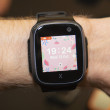CES 2006
Jan 4, 2006, 7:00 PM by Eric Lin and Rich Brome
Our report from CES in Las Vegas. Hands-on with Cingular 3G phones, Moto ROKR E2, Sony Ericsson W810, new Samsung sliders, Pantech's new lineup, and more!
Intro
It's that time of year again. Time for the holidaze to wear off and the march of progress to resume. Progress for us means new technology and new phones, and the winter trade shows where we get a glimpse of those marvels to come.
As usual, the consumer electronics industry wastes no time in starting the year in gadgets early by holding the mother of all tech trade shows - CES - in Las Vegas the very first week in January. This year, the show is bigger and badder than ever, expanding to cover three convention centers spread across town. CES is the one trade show large enough to truly take over Las Vegas.
This year, there's more mobile phone news than ever. As usual, Phone Scoop is on the scene. This year we have twice the manpower, so we can bring you even more depth on everything you want to know.
Part 1
Cingular 3G
As anyone following the industry knows by now, Cingular recently launched their 3G service. In a rare turn of events, a U.S. carrier actually launched a new technology before anyone else. That technology is HSDPA, and Cingular currently has the first and only large-scale deployment of this new WCDMA/UMTS-based 3G technology.
What's available now is just a data card for laptops, but later this month, Cingular will launch its first two WCDMA phones for consumers: the Samsung ZX10 and the LG CU320.
The two phones are fairly similar in terms of features, although the LG CU320 (above) has Bluetooth and tri-band GSM (850/1800/1900). The ZX10 lacks Bluetooth, but does feature quad-band GSM for better global roaming. Both phones have swivel megapixel cameras and a microSD memory card slot. Both phones can also handle simultaneous voice and data connections, which is something that current EV-DO phones for Sprint and Verizon can't do.
The ZX10 and CU320 are the whole lineup for this quarter, but things will take another step forward in the 2nd quarter, when more 3G phones are added to the lineup, including the first models with HSDPA for even faster data rates.
The Samsung ZX20 will be one of the first HSDPA models for Cingular. It looks identical to the ZX10, but adds Bluetooth in addition to HSDPA. In fact, the only way we could tell them apart was to look for Bluetooth in the menus.
Also in the 2nd quarter, Cingular plans to add an HSDPA model from LG, as well as 3G models from Nokia, Motorola, and Sony Ericsson (although none with HSDPA).
The Nokia model is expected to be the recently-announced N80, although it won't be the exact version Nokia announced. Nokia announced the N80 with support for WCDMA 1900, but not WCDMA in the 850 MHz frequency band. That's a problem, because WCDMA 850 is a Cingular requirement. At the moment, Cingular's 3G network is 1900-only, but that will change in a few months as Cingular lights up 3G in more east-coast cities, some of which will be 850-only.
Look for the tweaked N80 (with WCDMA 850 and 1900) in the 2nd quarter. It's not clear if Nokia will tweak the recently-announced 6282 to add WCDMA 850 as well. Apparently there was some confusion between Cingular and Nokia about the WCDMA 850 requirement, but now Cingular spokespeople are making it quite clear that they simply will not offer any 3G phones without WCDMA 850.
Finally, later this year, look for Cingular to offer this data card from Option that supports HSDPA at the full 3.6 Mbps data rate:
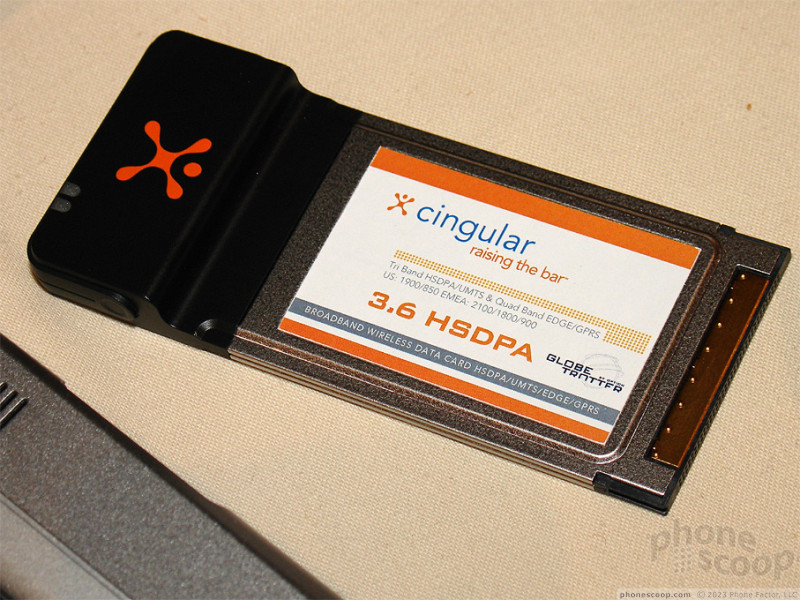
The current cards (and the forthcoming first crop of HSDPA phones) can only do 1.8 Mbps, even though the network supports 3.6 Mbps. This Option card is the same one that recently made headlines for being the first to achieve the 3.6 Mbps rate in tests in France. Cingular is doing a live demo of the same card here at CES, proving that their network already supports the fast rate.
The Option card supports just about every technology and every frequency band you've ever heard of, which is why they call it the "Globe Trotter". It not only does WCDMA and HSDPA in the 850 and 1900 bands for the US, but also in the 2100 band for the rest of the world. It also supports quad-band EDGE and GPRS.
Cingular also showed us a quick demo of "Cingular Video", their video-on-demand service to compete with Verizon's VCast, etc. It's pretty similar, but using Real (RealPlayer, RealVideo, etc.) The interface is pretty straightforward, with a menu tree of available content, and the ability to bookmark favorite TV shows and other content. Videos load relatively quickly, with only a couple seconds of buffering, and playback is fairly smooth and clear for most content, although not perfect. HBO, ABC, and Comedy Central will be among the featured content providers at launch.
ROKR E2
The ROKR E2 is Motorola's newest music phone, and their only all-new phone being announced at CES.
The E2 isn't really anything earth-shattering in the world of music phones. There's no hard drive, and it doesn't do over-the-air (OTA) music downloads.
The version announced at the show has iRadio instead of iTunes, although that could be a blessing considering the 100-song limit imposed by Apple on the ROKR E1. However in a press conference Thursday night, Motorola executives mentioned that the ROKR E2 can support a variety of music software, including iTunes. Carriers who offer the E2 will be able to choose the music software they want installed, so carriers that support iTunes (like Cingular) can offer it with iTunes, those who support the new iRadio service can offer the E2 with iRadio, and other carriers can offer it with generic music player software.
There is a lot to like about the E2, such as the easily-accessible, hot-swappable, full-size SD card slot supporting up to 2 GB, and the stereo 3.5 mm headphone jack on the top. It also sports a full set of dedicated music keys on the left side, and a sliding key-lock switch on the other side (can someone please tell me why more phones don't have that?)
Looking past the music aspects, the E2 is an all-around decent phone. (That's a relief after the E1, which had badly dated specs when it launched.) The E2 uses Motorola's new Linux-based platform. The specs include a nice QVGA display, a 1.3 megapixel camera*, and Bluetooth (supporting stereo, of course.)
The E2 is also a nice size, and has a nice, solid, comfortable feel to it.
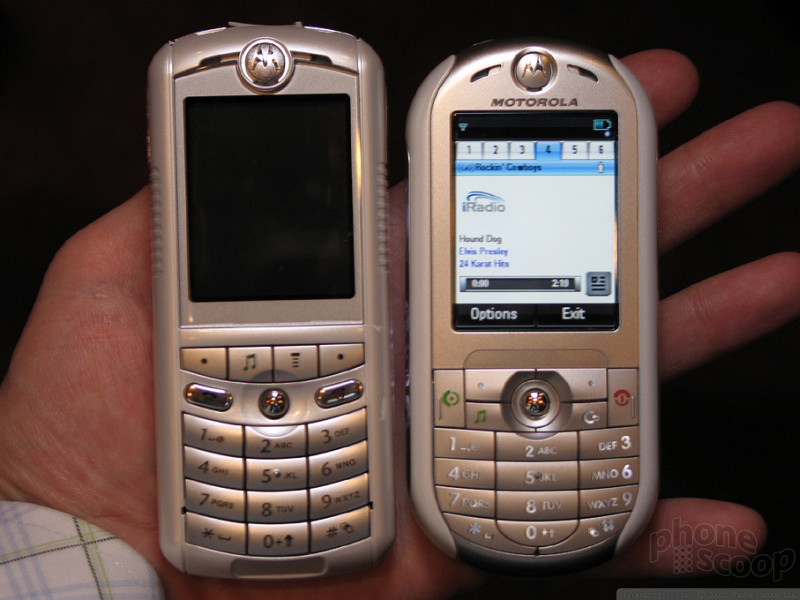
I think it's fair to say that the E2 is what the E1 should have been. If Motorola had made this the first ROKR, they probably could have avoided all the bad press that followed the first ROKR launch.
There are two colors that will be available, depending on region and channel: a silver/white one, and black:
The ROKR E2 is expected to be available in the first quarter of this year.
Samsung D807
Samsung seems to be on a slider kick these days, at least when it comes to GSM phones. Hot on the heels of the ultra-slim T809 that just launched for T-Mobile, Samsung this week took the wraps off the D807 and T709.
The D807 is simply the U.S. (quad-band) version of the D800, which was announced for Europe two months ago. (Similarly, the T809 is the U.S. version of the D820.)
The D807 has almost the same exact feature list as the T809, and both are about the same size and very slim. But for whatever reason, they are two different phones, clearly designed by different product teams at Samsung.
The D807 does have a couple of handicaps compared to the T809. The most glaring is the truly awful keypad, which unfortunately is very similar to the keypad on Samsung's A900, but smaller and even harder to use. The problem is that it's just too flat and smooth. There are no separate keys that can be felt with your fingertips. The silver strips in the center are just decoration and don't help the ergonomics.
The other hits against the D807 include a lower-resolution display, (176 x 220 instead of QVGA like the T809,) and a camera that doesn't swivel.
However, the D807 is blessed with Bluetooth, speakerphone, microSD card slot, music player, and speaker-independent voice dialing from VoiceSignal (unusual for a Samsung GSM phone.)
The D807 should be available for Cingular in the 2nd quarter.
Samsung T709
The Samsung SGH-T709 is a phone that accidentally leaked out at a recent Samsung press event, but now it's official and on display. The T709 isn't super-slim like the T809 and D807, but it's still small. The big feature of the T709 is built-in Wi-Fi.
The Wi-Fi features presumably use UMA technology for seamless roaming between local Wi-Fi networks and GSM networks. This will let you use your phone in places where there is Wi-Fi coverage but little or no GSM coverage. Since anyone can set up their own Wi-Fi base station for not too much money these days, it essentially lets people fill in "dead zones" at home or in the office themselves.
Samsung's model numbering scheme is pretty transparent these days; if you pay attention, it's pretty clear which phones are going to which carriers just by the name. But if that didn't tip you off, the little logos on the d-pads are always dead giveaways.
So obviously the T709 is headed to T-Mobile, which makes sense given their extensive network of Wi-Fi hot-spots. T-Mobile is also expected to pick up Motorola's A910 UMA / Wi-Fi phone.
The T709 has what seems like a robust and fast interface for finding and configuring access to Wi-Fi networks. Unlike GSM, with Wi-Fi you have to do some configuring for each network you want to access.
We discovered an interesting screen in the T709's menus that references a "T-Mobile wireless router". Presumably this is a UMA-enabled Wi-Fi base station that T-Mobile plans to sell, to let people add coverage at home. That's the kind of hardware we expect every carrier offering UMA service to offer, but this is the first explicit reference to such a device we've seen for T-Mobile USA.
The T709 is no one-trick pony. Besides Wi-Fi, the phone also sports EDGE high-speed data, speakerphone, and - like the D807 - speaker-independent voice dialing. It also has a 1.3 megapixel camera with Samsung's newest camera software, which has a slick interface and supports advanced features like ISO control and various metering modes. There's no memory card slot, but it does have about 80 MB of internal memory. The display is 176 x 220 resolution.
Look for the T709 to hit shelves in the 2nd quarter.
Part 2
Sony Ericsson W810
Sony Ericsson's W800 Walkman phone is one of the most popular music phones launched in Europe to date. Based on the K750, but with some different styling and software, the W800 has received rave reviews for its music functionality, camera quality, and all-around good performance and mix of features, style, and pocketability.
This week, Sony Ericsson finally announced a version of this popular phone for the U.S. The W810 takes the W800 and adds the features you might expect for a U.S. variant, such as GSM 850 and EDGE (just like they did with the S700 and S710.) However, it also includes some hardware changes, such as a larger and much brighter display.
The W810 looks and feels great. The ergonomics of the W810 are better than the W800. The number keys have a better feel to them, and those who dislike joysticks will especially appreciate the W810's d-pad. The d-pad also has the music playback functions marked on it, making music control slightly easier.
The one disappointment compared to the W800 is the lack of a lens cover. The W800 has a handy lens cover, which automatically activates the camera when opened, even if the keys are locked. Although the W810 lacks the lens cover, you can of course hold down the camera key to activate the camera, or assign it to a shortcut key.
The W810 should join the W600 in Sony Ericsson's Walkman lineup for the U.S. in the second quarter.
Sony Ericsson also demo'd a few new music accessories, including the MDS-70 high-quality speakers with remote control, and the interesting MPS-60 wired speakers that can positioned a couple of feet apart for good stereo separation (but unfortunately lack any good way to wind up the wires).
Headsets Galore
Thanks to widespread availability of Bluetooth and music player handsets, headsets and audio accessories are all the rage this year.
Motorola
Motorola kicked off the trend by announcing a number of headsets that combine both Bluetooth and audio by using the A2DP profile that allows devices to stream stereo to headphones or speaker systems. Recently Motorola announced the Audex line in conjunction with Burton. This includes a jacket, helmet and padded hat, all of which have Bluetooth enabled stereo speakers. Then this week Motorola also announced a set of Bluetooth enabled DJ style headphones. Apparently all four of these use the same set of Bluetooth headphones, which will be interchangeable. While each will be sold as a complete listening solution, Motorola is hoping users will also be able to buy other compatible products and just pop the headphones in.
Motorola also introduced a few other Bluetooth products. We've been told the MINI in-ear Bluetooth headset has an excellent noise-cancelling microphone that rivals much larger high-end models. Unfortunately we could not get it to fit into our ear correctly, it was more comfortable with the microphone pointed toward the back of our head, which would not do much good. Others had better luck. Motorola told us additional ear pieces will be available to fit a wider range of ear shapes.
Because the MINI is so small, it doesn't have a very large battery, and thus only has a 1.5 hour talk time. The MINI actually comes with a case with its own rechargeable battery that can recharge the MINI while out on the road. The case is sleek and stylish, but its high tech looks bear certain associations that might not make it appropriate for use in public.
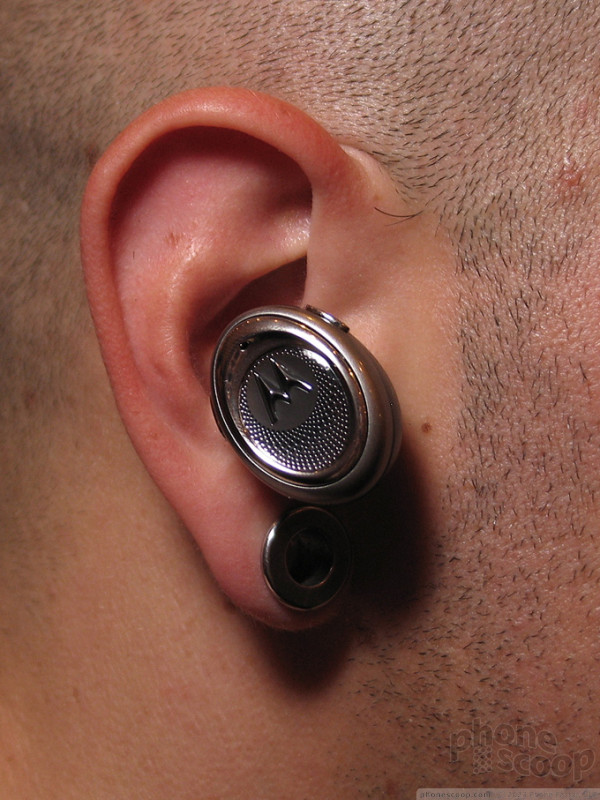
Oakley and Motorola also paired up yet again for the O ROKR stereo Bluetooth glasses. Based on the Thump 2, the O ROKRs are bulkier but much more stylish than the RAZR WIREs. In addition to acting like a Bluetooth headset for calls, the O ROKRs also can playback and even control music from the ROKR E2 and other A2DP phones. They are rather thick and make most people look quite formidable, but thanks to ultra-light materials, they were rather light and comfortable.
Nokia
Nokia had new Bluetooth headsets of their own, however Nokia has not adopted stereo Bluetooth like Motorola has. Instead Nokia is taking the traditional headset to various extremes.
One extreme is piece of jewelry. The BH-800 is a tiny piece that can be worn like a pendant on a jewelry-like chain that comes with the headset. Worn around the neck it is quite elegant, and in the ear it is subtle and stylish. Unfortunately the earpiece is all too similar too a cheap pair of earbuds, and fits in your ear just as poorly, ruining what otherwise is a classy experience.
An extreme is the Inspector Gadget of headsets - the BH-900. This unit is a bit larger than most modern handsets, but it pays off in 8 hours of talk time and more functions than we can name off without boring you. The coolest aspect is that the microphone is actually on a sliding boom. The boom is an active slide, so you can answer the phone just by pulling out the boom or hang up by sliding it back into the headset body.
The BH-200 was like the mama bear of headsets. It doesn't have any fancy features - it doesn't even have advanced noise cancelling technology - but the fit and comfort was so nice. Plus it will only set you back $55, putting that comfort well within most people's reach.
Kyocera Strobe
Kyocera had one new phone to show off at CES: the Kyocera Strobe KX21. This is Kyocera's first true messaging phone. It's designed to compete with phones like the Samsung D307, LG F9200, Motorola A630, and LG VX-9800. Like the latter two, it looks like a regular bar-style phone at first, but flips open "sideways" to reveal a landscape display and QWERTY keyboard.
Not everyone will like the styling, but Kyocera does plan to offer additional styling variants for different carriers. It's also a little on the large side, but not huge.
While the inner display is adequate, the outer display is disappointing. It's very small, yet attempts to cram in a full menu interface, meaning text and graphics end up very, very small. It's a good thing this phone is aimed at youth, because older eyes would have a very hard time reading this display. It's also rather dim and has a pronounced blue tint. A simple monochrome display for dialing and caller-ID only (like the Motorola A630) might have been more practical.
The QWERTY keyboard isn't all that great, either. It's not as bad as, say, the Samsung D307, but it's still near the bottom of the heap in terms of ergonomics. It's usable, but the relatively flat keys require extra dexterity that makes typing a slower process than it should be.
Those issues aside, the Strobe may still be a popular phone, simply because it addresses a crucial niche that has thus far been ignored: an affordable CDMA phone with a QWERTY keyboard for IM and SMS addicts.
Because there's nothing quite like it at the moment, and it is a type of product that seems in demand, Kyocera claims a large number of carriers are interested in offering the Strobe. It may be offered by a half-dozen or more carriers this year.
When playing with the Strobe, we noticed Bluetooth listed in the menus, and a quick test confirmed the demo model did in fact have working Bluetooth. That's not a feature Kyocera announced.... When asked, a Kyocera spokesperson admitted there is a Bluetooth version being offered to carriers, although the first carrier expected to offer the Strobe has opted not to offer the Bluetooth version.
Part 3
LG
Although LG didn't announce any new phones before the show, they were showing off the LX350, a new CDMA clamshell due out on Sprint. Although the 350 is a mid-range phone - it is only 1xRTT data - it is fairly elegant and feature rich. It has a 1.3 megapixel camera, dual color displays and Bluetooth. The version shown at CES even had the DUN profile enabled, which should make power users happy.
LG was showing off a number of their high end Korean phones, but not just to tease us. If things go well, we may see some of these in the States in one form or another before long.
One of the hottest phones LG was showing has been nicknamed the Chocolate Bar by Korean users, who have gone quite gaga for it. It is a sleek looking slider with no obvious buttons other than the D-pad select key when the phone is off, but once on, lights below the surface indicate where touch-sensitive keys are hidden, much like the Olympus m:Robe music players from last year. The phone gets it name from the keypad, which slides out to reveal a grid of square keys much like KDDI's infobar, which also looked more like something from Hershey than your typical phone.
While the current model is a Korea-only CDMA unit, LG is working on a GSM version of this phone for Europe due out late this Spring. There is a possibility that an American version could become available later, however LG has not committed to this yet.
LG was also showing off digital TV phones using a number of different protocols. The phones all have the same basic form factor, differing mostly by TV standard. DVB-H and MediaFLO were represented - both of which will come to the U.S. later this year - as well as Asia's DMB platform.
The phone suffers from some serious design flaws, and will most likely evolve before release - for instance it is impossible to do anything other than answer or end a call without flipping the screen to its horizontal orientation. However flipping the screen is actually pretty cool, as it rotates out from a corner instead of from the center, keeping the display centered.
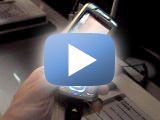
QuickTime format
While the form factor may not be ready for prime time, the services certainly are. Both DVB-H and FLO looked crisp and smooth most the time, (both suffered from some choppiness and pixelation here and there,) and had user friendly program guides.
Pantech 1
Pantech is a brand you're going to hear more of in the U.S. this year. They have actually been producing phones for the U.S. for many years; Pantech is the company behind the Audiovox (now UTStarcom) 8000-series phones. But starting this year, Pantech is phasing out its relationship with UTStarcom and starting to brand and distribute phones here on their own.
The first true Pantech phones for the U.S. are a couple of low-end phones on Verizon. Although they are Pantech phones, you won't see a Pantech logo on them, thanks to Verizon's heavy-handed policies about phone branding. Pantech would actually have pay Verizon, or commit to a large marketing campaign, to be allowed to put their logo on the phone. So all you'll see is a model number that starts with "PN" to indicate the manufacturer.
The PN-215 is already available for Verizon through some channels. It's the same phone as the Audiovox 8915 (Snapper) already available for Virgin Mobile. It's a basic camera phone, almost exactly like the 8910 it replaces.
An even more basic model - the PN-210 (above) - will be available later this month. It won't feature WAP, BREW or any really features beyond enhanced messaging. It does have speakerphone and voice dialing, though, which are fortunately becoming baseline features for most phones these days.
The next few phones on Pantech's road map are the replacements for the PN-210 and PN-215: the PN-310 and PN-315.
The PN-310 (above) is the more basic model. It's being pitched to carriers, but we got the feeling its release is not guaranteed.
The PN-315 is the camera-equipped version (VGA). It's not feature-packed, but it does have speakerphone, and it is impressively small and light. BREW, speakerphone, voice dialing and an OLED outer display round out the features.
The PN-315 is also surprisingly stylish; it almost seems like by shedding the Audiovox relationship, Pantech has finally been set free to create phones with decent design. Both the 310 and 315 also have excellent keypads.
Pantech also has a couple of slim phones in their lineup this year. It's amazing how much Motorola's RAZR and SLVR phones have influenced phone design these days...
The PN-320 is the slim clamshell CDMA model. It's very slim and light, and still manages to squeeze in a camera and external display. It also sports BREW (or Java,) MMS, speakerphone, and voice dialing.
Pantech 2
Pantech's U.S. lineup will get more exciting in the second half of the year. The company will launch EV-DO phones in the second half - they have models in MVNO's test labs right now.
One such model is the PN-8300, a feature-packed slider phone with EV-DO, a 2-megapixel camera, microSD memory card slot, music player, and speakerphone. Given that the 8300 is actually made by Pantech's SK Teletech division, which is related to SK Telecom, part-owner of soon-to-launch MVNO Helio, we expect this to be a Helio phone.
Another EV-DO phone in the works is the PN-E240. This clamshell phone sports dual color displays, a 1.3 megapixel camera, Bluetooth, a microSD card slot, and slick touch-keys on the outside to control the music player.
The manufacturer is also trying hard to get their phones on Sprint, although they don't seem to have any commitments yet.
In late 2006 or 2007 we should see EV-DO Rev. A phones as well as HSDPA phones from Pantech. Pantech also made it clear they have Windows Mobile smartphones in development for the U.S.
When the EV-DO and other high-end models are launched, Pantech will start a marketing push for their brand here in the States, and start working with Verizon to get their logo on their phones.
On the GSM side of things, the first phone we should see from Pantech here is the PG-C300.
The main draw of this phone is definitely the size. It's just insanely small, and truly feather-weight at only 2.41 ounces. Despite the size, it packs in decent features, including dual TFT displays, a VGA camera, Java, and speakerphone. The PG-C300 has been spotted on the FCC web site with a Cingular logo, indicating it is at least in testing with them.
The PG-C120 is basically a thin bar-style phone, clearly influenced by the Motorola SLVR series. It has a VGA camera, but otherwise its features are pretty basic. It's dual-band GSM 850/1900, with Java, IM, and speakerphone.
Samsung
The Samsung SCH-A930 is undeniably a handsome clamshell. While it is not as thin as the A900, it certainly is sleek and very light. In fact it is so light that when I first picked it up, I had to check that there was actually a battery in the phone. Despite its feather-weight, the A930 felt well put-together and rested nicely in the hand. It also has huge keys - perfect for texters with larger hands. Between its good looks and powerful features - including access to the new VCAST music service - this is shaping up to be a desirable phone for Verizon subscribers.
In addition to the ZX20 announced earlier this week, Samsung was also showing off a second HSDPA phone for Vodafone in Europe. Like the A930, this new clamshell was impossibly light, but this UMTS phone was also shockingly thin; it's easily a match for Motorola's 3G RAZR V3x in terms of thickness. It's more than a match for the V3x in terms of speed - Samsung was using this phone to demonstrate 3.6 Mpbs downloads. Rumors have been that Samsung will be the first manufacturer to offer a 3.6 Mbps handset in the U.S.
Samsung also showed off a number of their European and Korean phones, most of which have already launched. Samsung had a number of new phones on display that support the new live-TV standards like DVB-H and MediaFLO. The form factor is no longer pill shaped, but more closely matches the recently unveiled E750. However the flip and rotation mechanism to change the screen to a horizontal orientation are still the same. The non-clamshell model also has a swivel display with a landscape mode. Rumor has it one of these models shown off will be modified for the US and will be Verizon's first MediaFLO phone.
Although it is not bound for the US, the SGH-P300 is an interesting phone. It is not a new form factor - other Asian manufacturers have made "credit card" phones before - but it is still thinner than the SLVR and packed with features. The P300 is tri-band GSM/GPRS so it will work here, but has a very odd keypad layout more geared towards Asian countries than the West.
Part 4
UTStarcom
Although there aren't many UTStarcom-branded phones in stores right now, there are a number coming in the near future.
UTStarcom will join LG and Samsung with VCAST Music compatible phone on Verizon. The 8945 should be introduced when the PC component of VCAST Music goes live on January 16. It is the only launch phone that does not have external music controls, however it does have a Micro SD slot to store music and other content on. Because it is compatible with the VCAST Music service, the 8945 is obviously EV-DO capable, however other than music playback, it does not posses high end features. For instance, the camera is only VGA.
The 8945 will be one of the last UTStarcom phones manufactured by Pantech (its Pantech model number is PN-230.) Nearly all future Pantech phones will be distributed and branded by Pantech themselves.
In the next few months UTStarcom will introduce two low end phones - the 7025, followed by the 7075 - both of which are actually manufactured by UTStarcom.
The 7025 is a bare-bones CDMA clamshell that does not even include a WAP browser.
The 7075 is still an entry level phone, but does have a few desirable features like a VGA camera and external caller ID (which is monochrome).
At the end of 2006, UT Starcom will launch more feature rich handsets. The 7945 and 9945 are both EV-DO clamshells with 1.3 Megapixel cameras, Micro SD slots, dual color displays and external music controls.
The 9945 adds Bluetooth to the mix as well. While UTStarcom will make the 7945, the 9945 is made by KTFT, the hardware division of KT Freetel.
Finally, UT Starcom showed off a CDMA SLVR copy called the PCS 1400.
Although it does not posses any features beyond the basic speakerphone and WAP browser, the PCS 1400 does mimic the thin candybar form factor catching on in phone design. UT Starcom says that a an MVNO will likely launch this phone in the US late 2006. Although we cannot confirm this, Virgin Mobile feels like a strong candidate.
Moto TXTR
Motorola introduced the TXTR at this show, but didn't have any to show off until later in the week. Although we were unable to pair the device to a phone and really put it through its paces, we did get some hands-on time with one.
The TXTR feels great. The keypad is wide enough to allow a decent amount of space between the large keys. It might actually be even easier to use than the Hiptop 2's keyboard. The keys are slightly domed, so they are easy to feel out and they have a nice positive click without requiring much effort to press.
It is quite thin and light. In fact it reminds us of the size and weight of the Samsung P300 mentioned previously. It slides easily into a tight pocket and should make an excellent companion to a standard Bluetooth phone without taking up hardly any pocket or bag space.
The TXTR has a 4 line monochrome LCD with a bright blue backlight. It is very easy to read under all lighting conditions and could really make a statement when you want to fire off a text from the club or use it to enter some prospective date's digits.
Although it uses Bluetooth instead of IXI's Personal Mobile Gateway technology used in the Ogo, the TXTR is truly the embodiment of the same PMG concept. It will be interesting to see if this better hardware implementation will make this device more successful than the ill-fated Ogo. If nothing else, it is definitely smaller, better-looking, and has a superior keyboard.
Spotwave
The Spotwave Zen is a solution to indoor coverage issues. Although there have been products like the Zen before, this seems like the first one to be really mass-marketed.
It's designed for situations where you might get only a bar or two of signal outside or on the roof, and none indoors. The Zen will take that weak signal and give you full bars inside. It's also useful for situations where you get service indoors, but only one or two bars. In that case, using a repeater like the Zen will improve both battery life and data speeds.

The Zen has an antenna that you point in the direction of a tower (the large box) and a smaller box that goes inside and provides indoor coverage. A single thin cable links the two boxes, and power is only needed for the smaller box.
It acts as an intelligent repeater, only boosting power as much as necessary to provide good coverage, so it plays nice with networks, meaning better performance overall.
Unfortunately, it only works on the 1900 band, but it will handle any technology in that band, including GSM, CDMA, WCDMA, and EV-DO.
Wherify
Wherify was still showing off the same tiny Ericsson T28 style handset for the very young and very old. Although the phone is still the same one we saw over a year ago, Wherify has cemented the details of the service.
The handset has 5 one touch dial numbers (including one for 911) which are programmed via coded sms sent from Wherify's web interface. Although outgoing calls are limited to 5 numbers, incoming calls can come from any number.
Guardians can log into Wherify's site and request a location at anytime, or they can schedule a location ping (which the company calls breadcrumbs) at regular intervals. The system sends an sms ping to the handset which then takes a minute to lock down a GPS signal and open up a GPRS connection to send location data back to Wherify.
The Wherify has a second generation GPS chipset that is capable of locking onto satellites in cars and wooden buildings. However if no GPS signal can be found, Wherify will at least return the location of the tower the handset is currently attached to. Guardians can then use the web interface to display the location on either a street or aerial view map.
The Wherify set has already launched in a few South American countries and will launch in the US and Canada sometime in April or May. Wherify promised it would be out in the States before Mother's Day. They could not say which carrier it will launch with, but the device is a GSM/GPRS unit and was being demo'd with a Cingular SIM.
Comments
hey rich or eric!!!!!!!!
with all the added features the rokr e2 is making me think its going to be as heavy as my se s710a. is it or not?
There is a side-by-side shot of it next to the E1 in the article:
https://www.phonescoop.com/articles/ces_2006/index.p ... »
The E1 was a reasonably small phone,...
(continues)
W810 Does anybody know if this phone will be branded
Does anybody know if the camera has same features as the W800??
I have the W800 but reception isn't good since it doesn't have the 850 band. But love everything else on the phone. Just wondering if the W810 will have some of the same camera features??? Thanks Rox
Alpha Tag
Will
(continues)
hey rich or eric!!!!!!!!......sorry to be a bug
please do reply.
is it true that Verizon is coming out with Sam A900??
Do remember that Verizon might still be getting the SCH-A915, which was qualified with the Bluetooth organization ar...
(continues)
Samsung Innovation?? 5MP phone by 2006??
Where is the innovation this year? Already released Samsung SPH-A900/SGH-T809? A Cingular look-alike (D807). Is the biggest announcement they have a WiFi phone for T-Mobile with no Bluetooth/QVGA? What is this?
I doubt that the yet to be reviewed A930 will be anything more than a Verizon A900 with MicroSD.
Where is the 5MP that Samsung promised by years end 05'? Now THERE'S a question to ask the floor reps Rich....
All in all, this years CES, for Samsung, did not spark the same excitement of 2005. None of these "SLIM" phones make me want to dump my year old now MM-A800- in fact, they really make me realize that 2005 just *might* have been the year o...
(continues)
An employee I know and trust said they designed it and pitched it to the carriers, but carriers turned it down. Carriers simply don't believe the demand is there for camera phones with th...
(continues)
I mean the guy who gets an allegic reaction when he says one negative thing about Samsung. 😛
Overall opinion is not too hot.
However, they had lots of misses, like the "calculator phone" and the a930 was not my cup of tea (and seems pretty fat).
Sony Ericcson and Motorola really had nothing really new there. SE's spinner phones are all beginning to look the same to me too (other than bright colours of the W600).
Pantech and UTStarcom? Man they were ugly, no correct that, fugly. Add the Kyocera strobe, which is a cross between Motorolas old "peanut phone" and LG's fat 9100.
Speaking of LG, I thought they have the most diverse lineup. I really dug that 350 which has a metal interior (although the whole phone should be in bl...
(continues)
SLVR
A2DP question
I know it would take sales away from future handsets, but it sure would be nice to have A2DP available in a firmware upgrade.
It's more likely to be possible with smartphones running OSes like Windows Mobile, but even then I'm not sure it's possible.
Motorola Q?
Sorry if it was answered already!
They're continuing to tweak the keyboard. It's slightly better each time we see it, but not dramatically different from the first time we saw it. The thumbwheel is slightly larger than be...
(continues)
https://www.phonescoop.com/articles/ces_2006/index.p ... »
🙂
Samsung P300
Video Calling?
Motorola only announcing one new phone??
Not much to write home about
Rich
http://gizmodo.com/gadgets/ces/live-from-ces-parrot- ... »
http://gizmodo.com/gadgets/ces/live-from-ces-arc-aud ... »...
(continues)
I UNDERSTAND IT DOESN'T HAVE ITUNES BUT........
(continues)
Videos from CES
the new Moto MINI BT headset
the Moto Razr v3i
the Nokia N91 (which looks quite impressive)
the treo 700w
http://msn-cnet.com.com/4520-11405_1-6400429-1.html? ... »











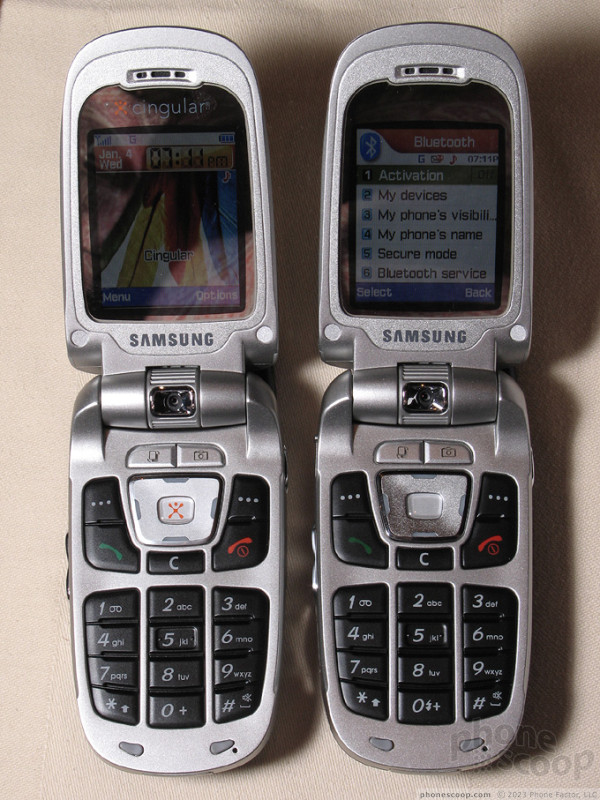


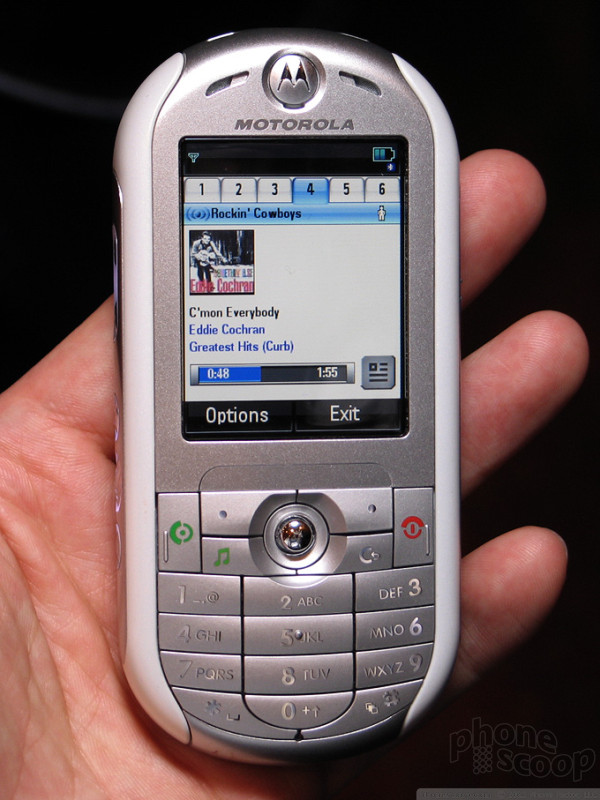





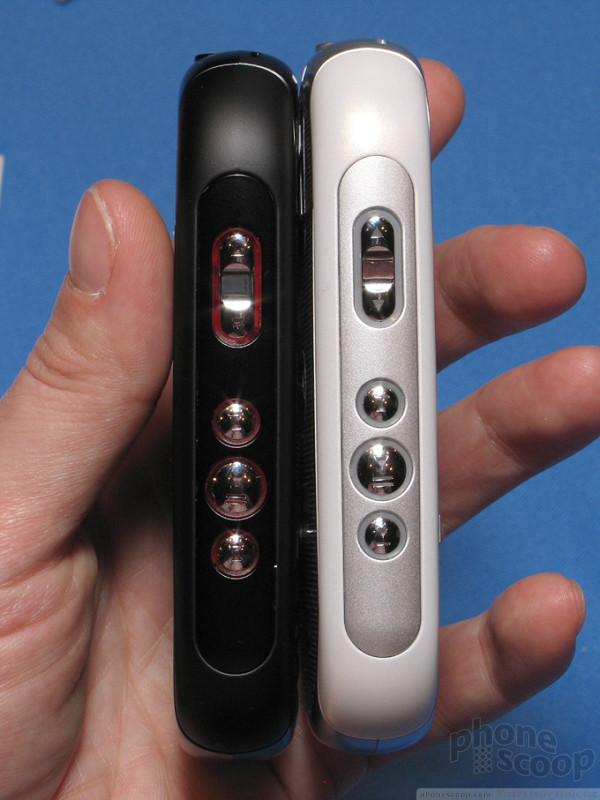





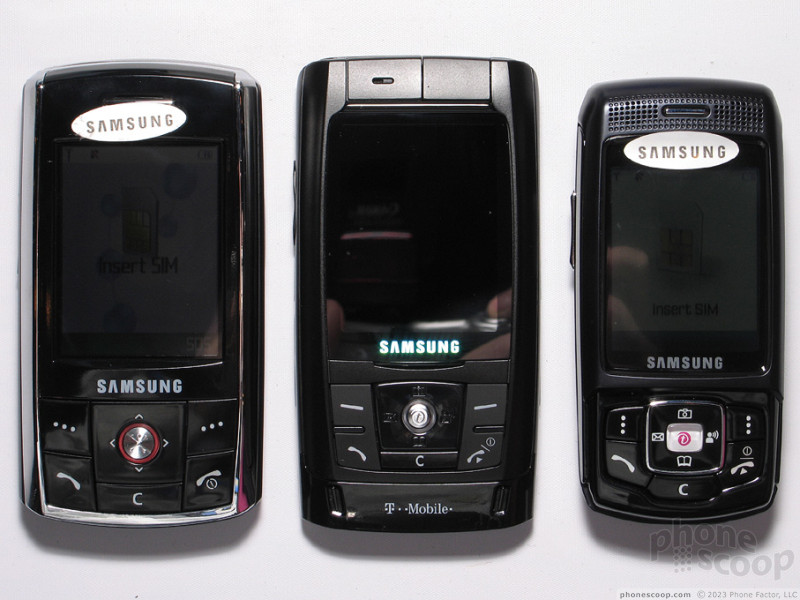





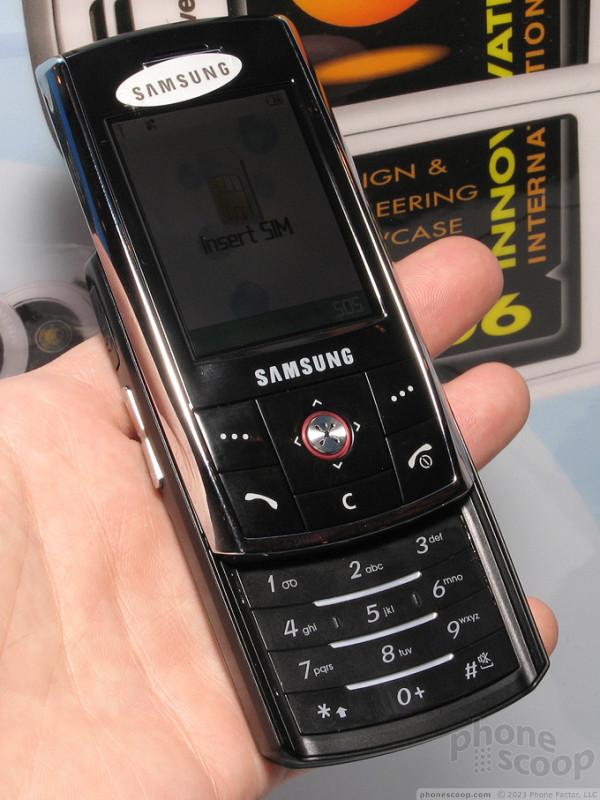






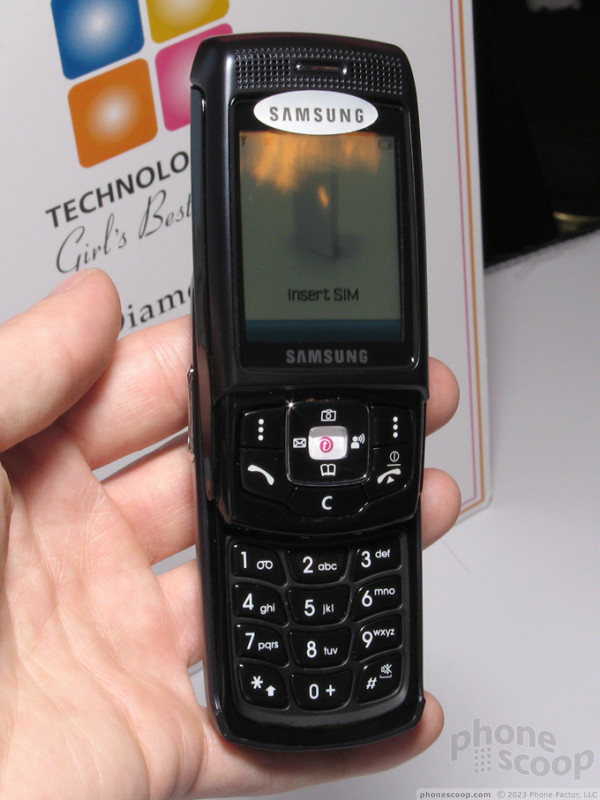






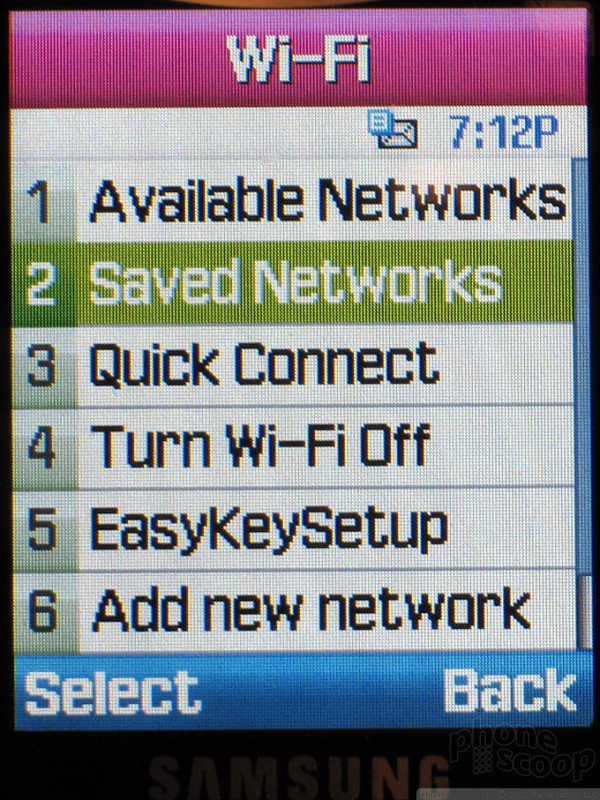




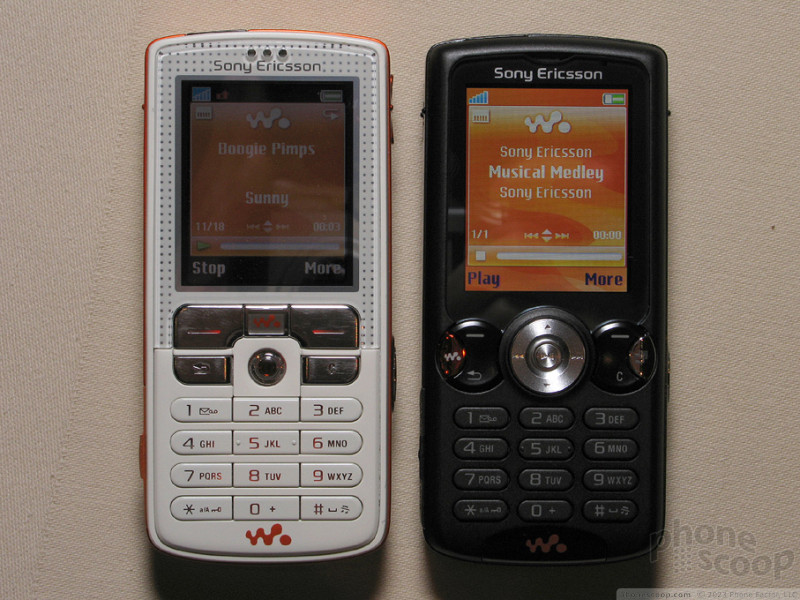



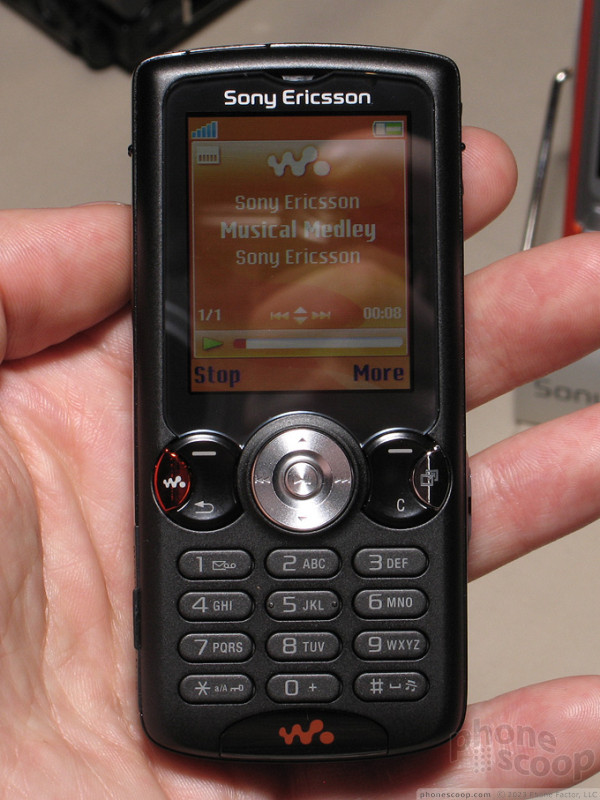






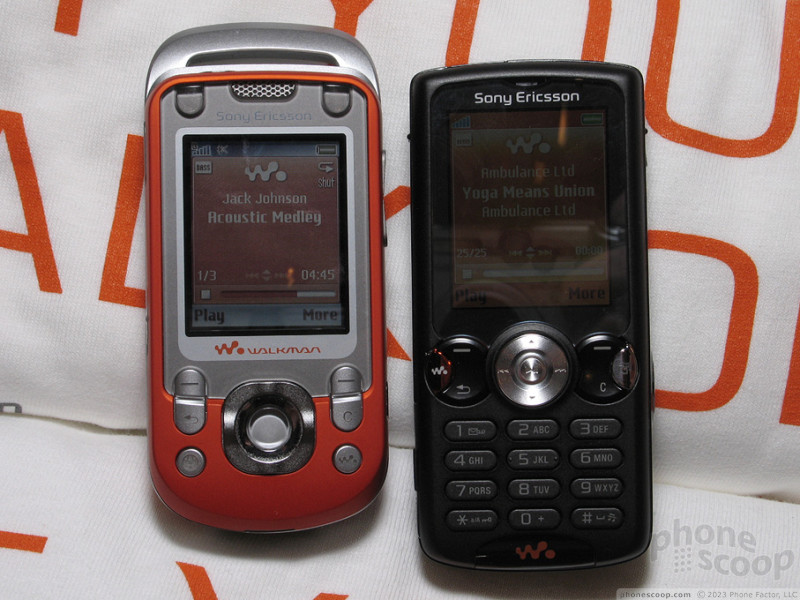


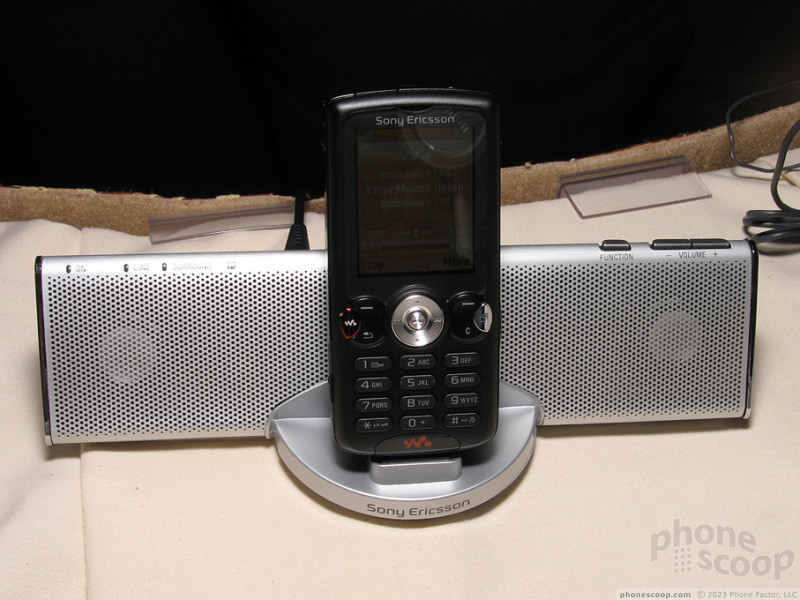



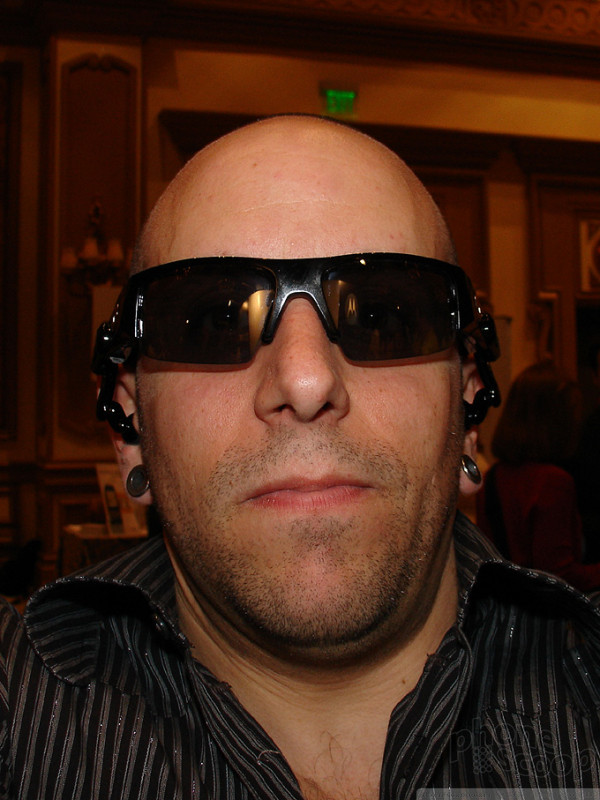



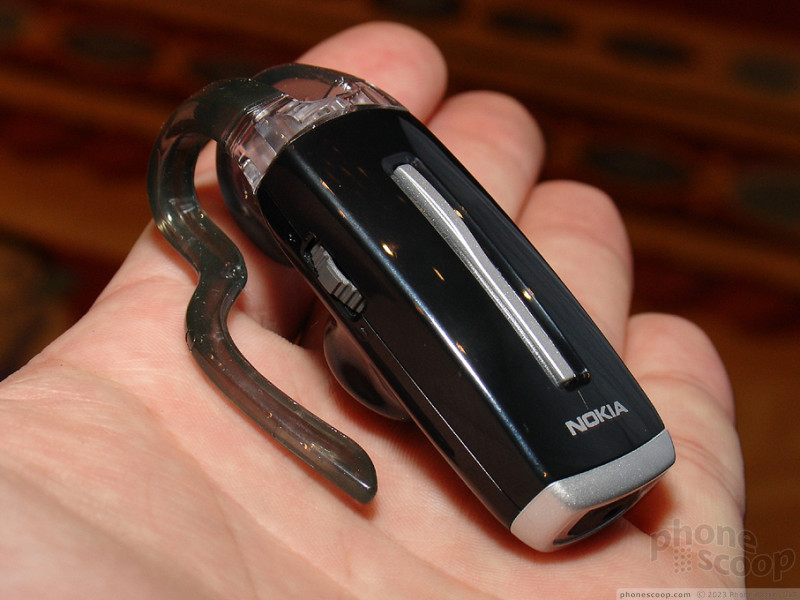








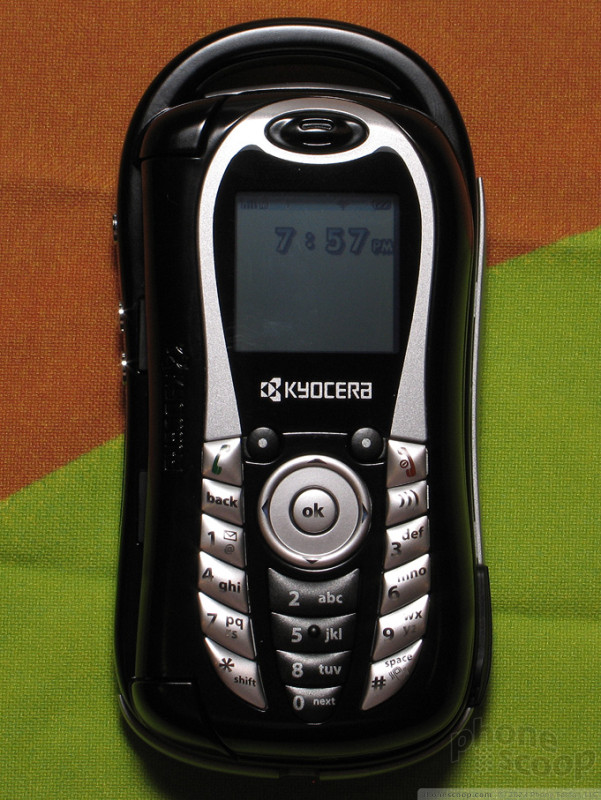







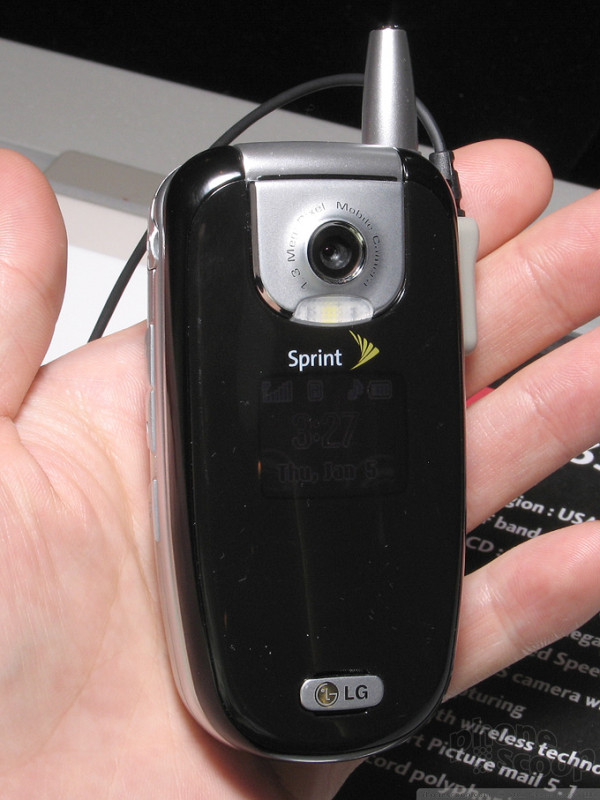




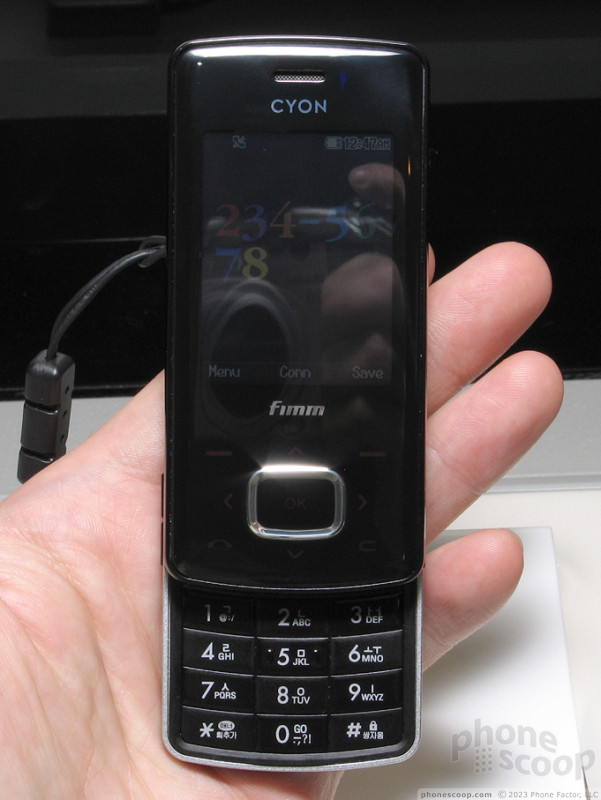




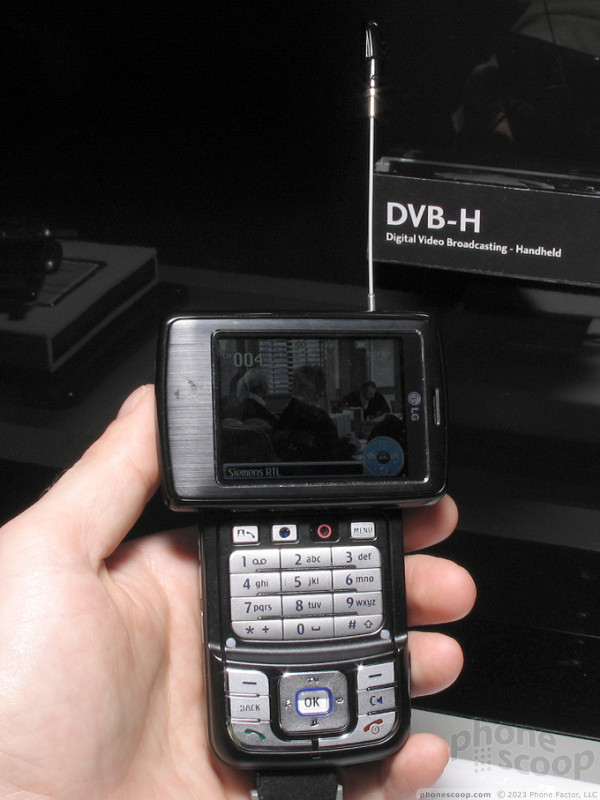


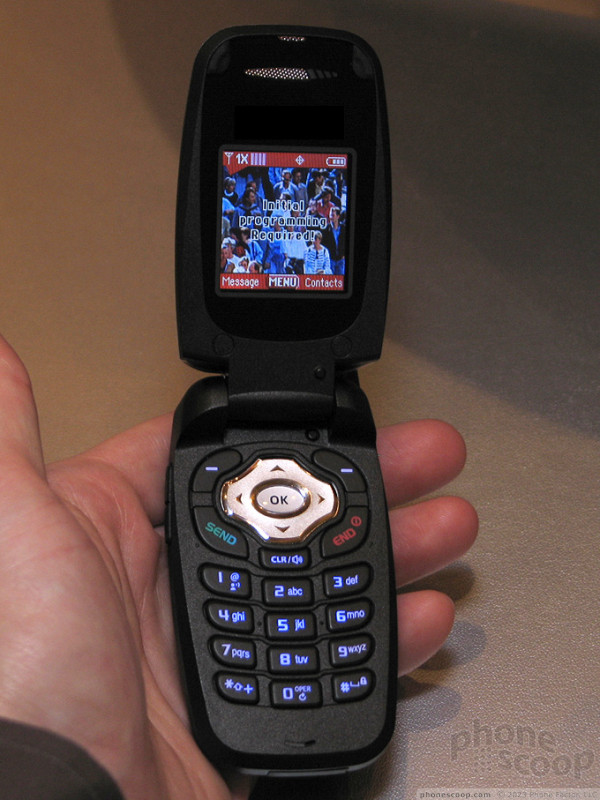




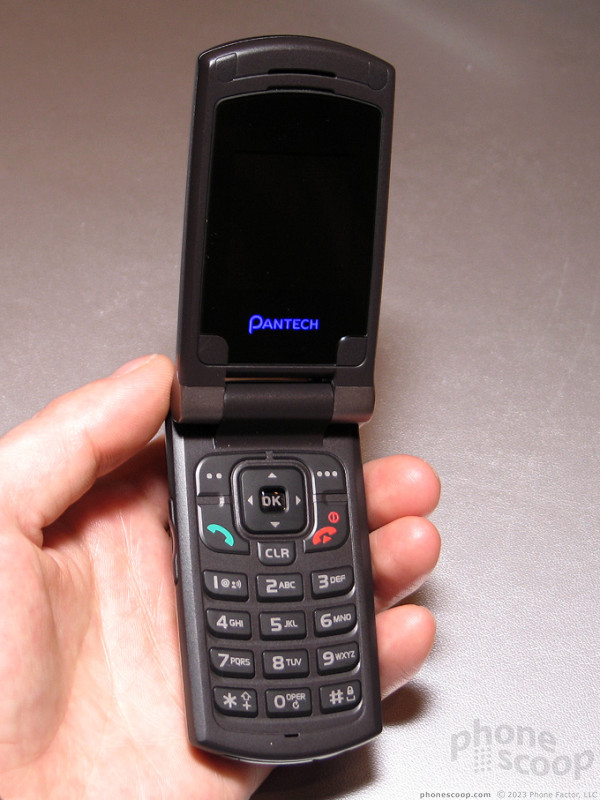



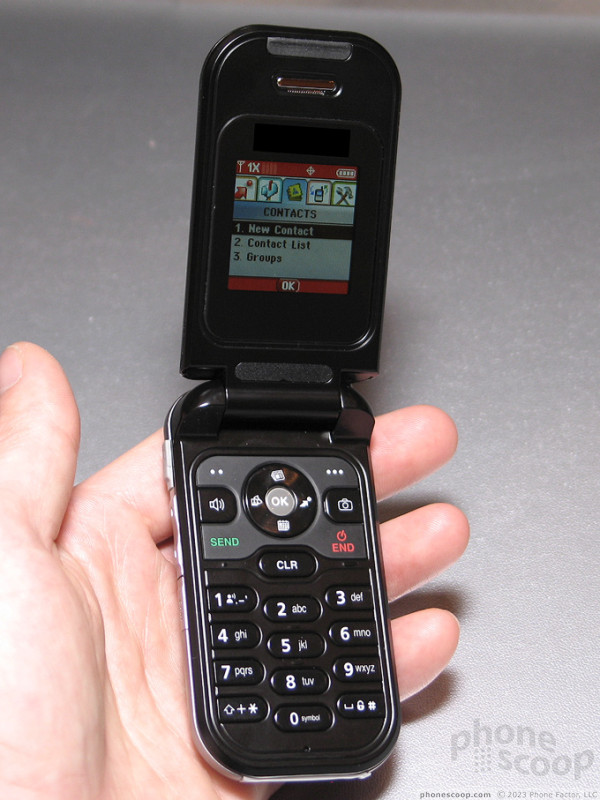




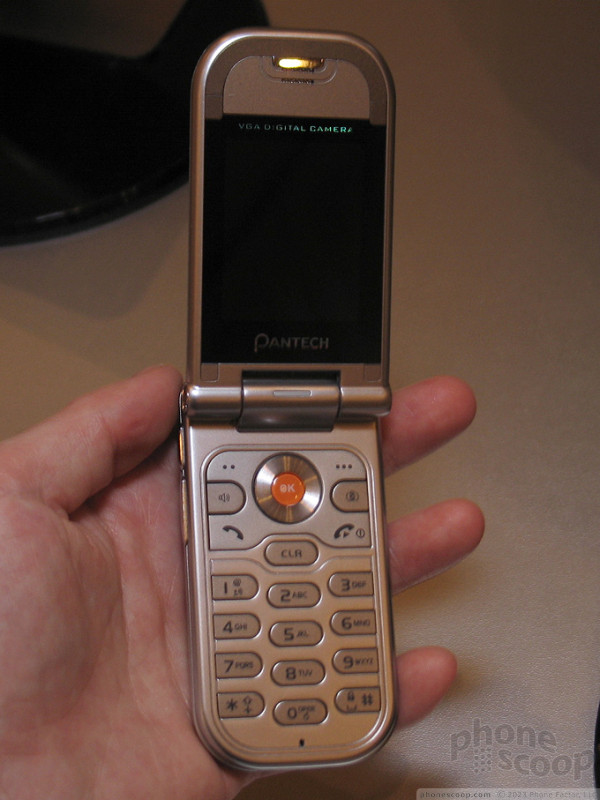






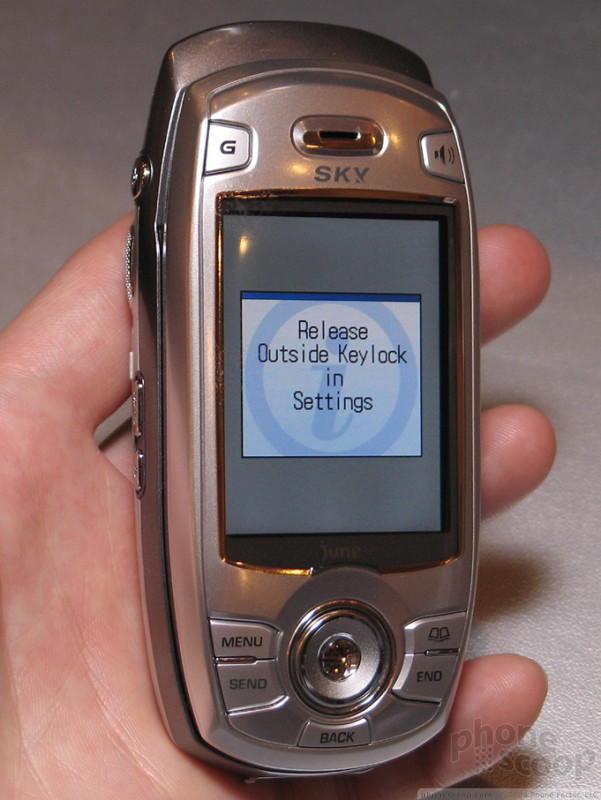






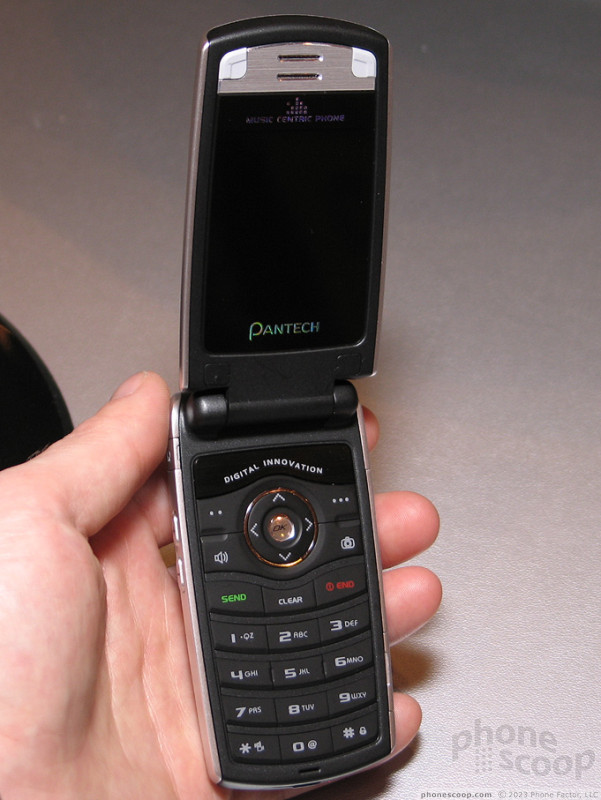






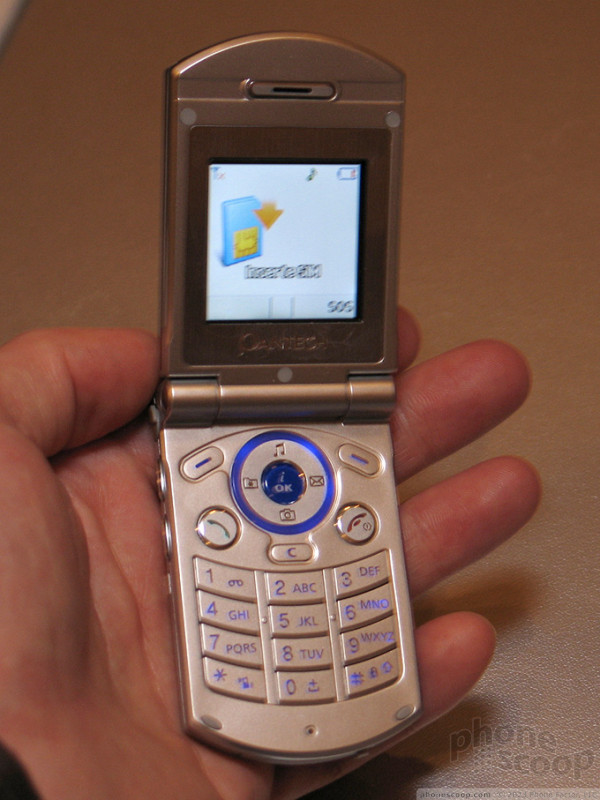





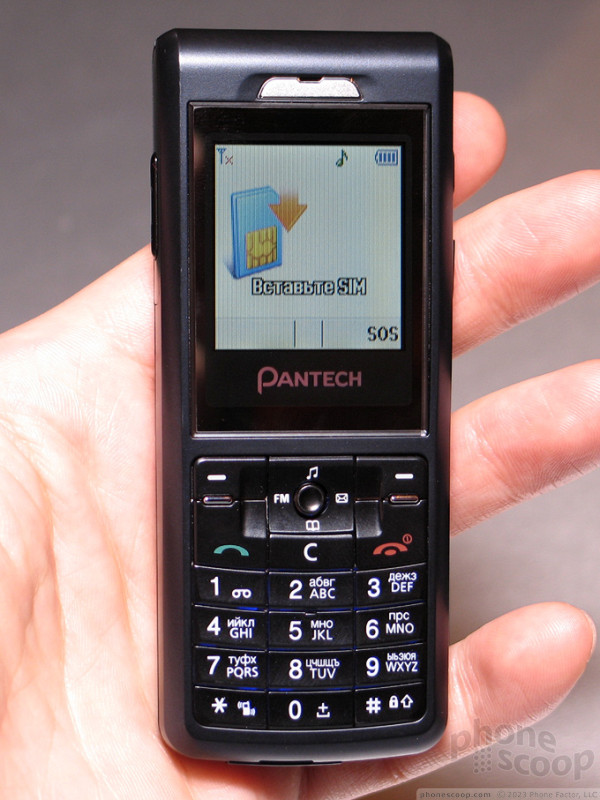




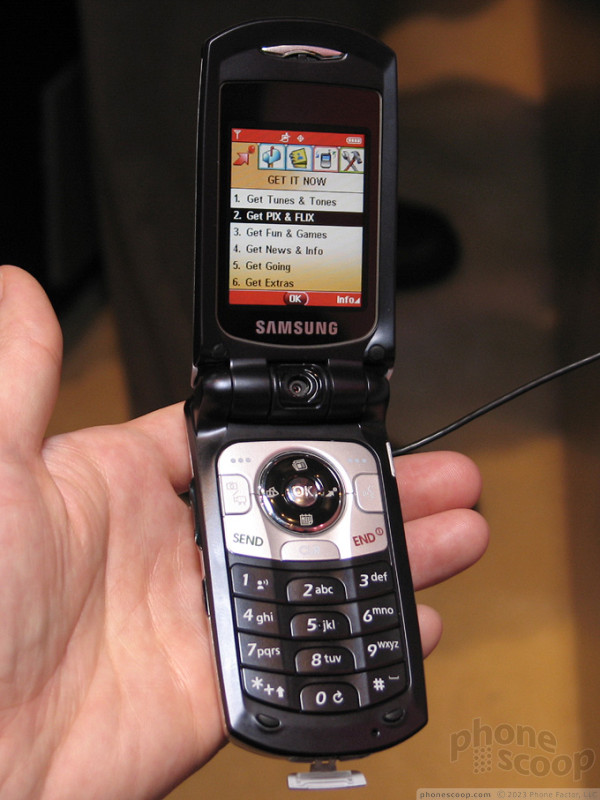





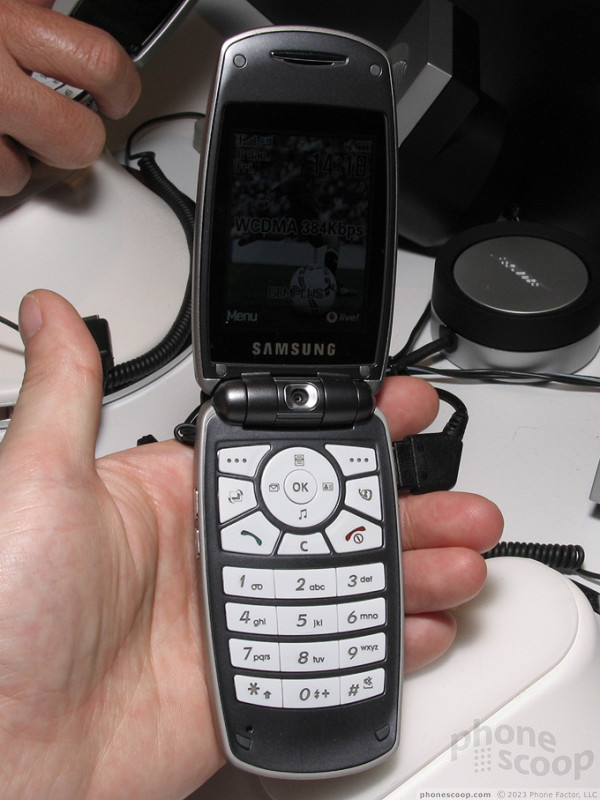



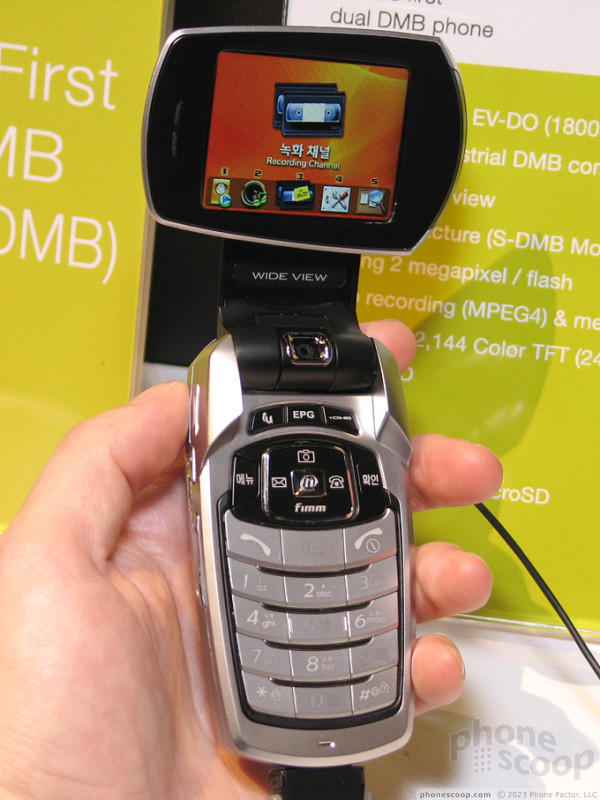






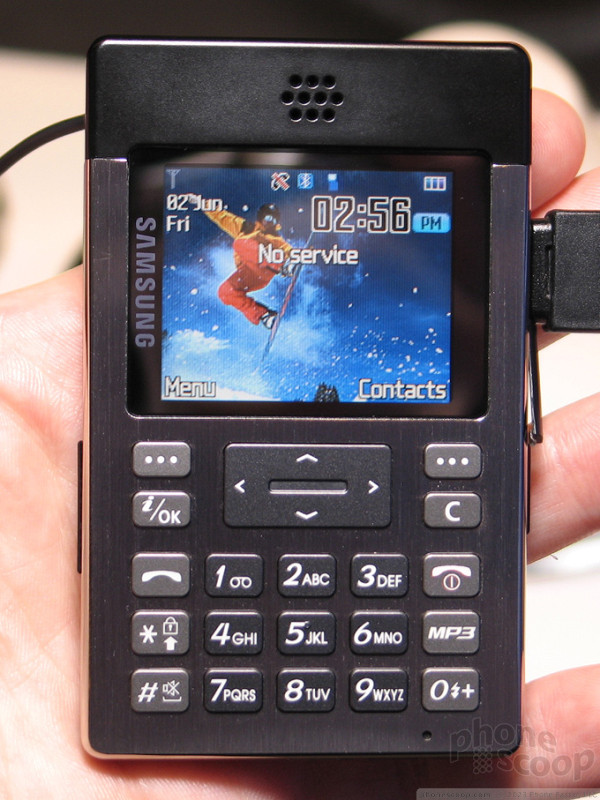



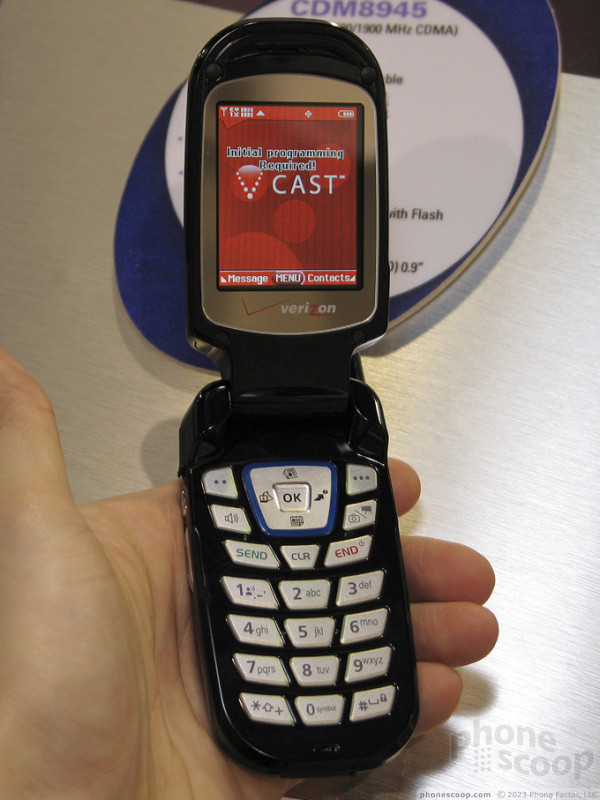




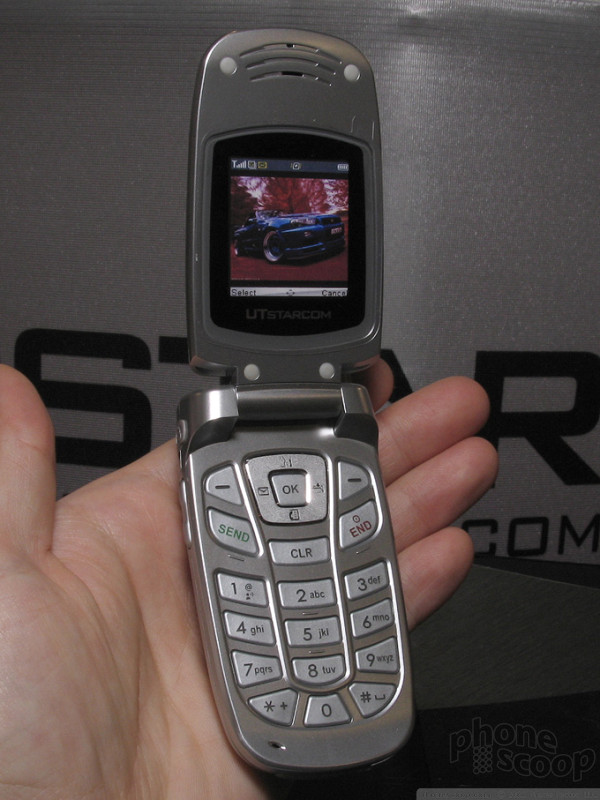




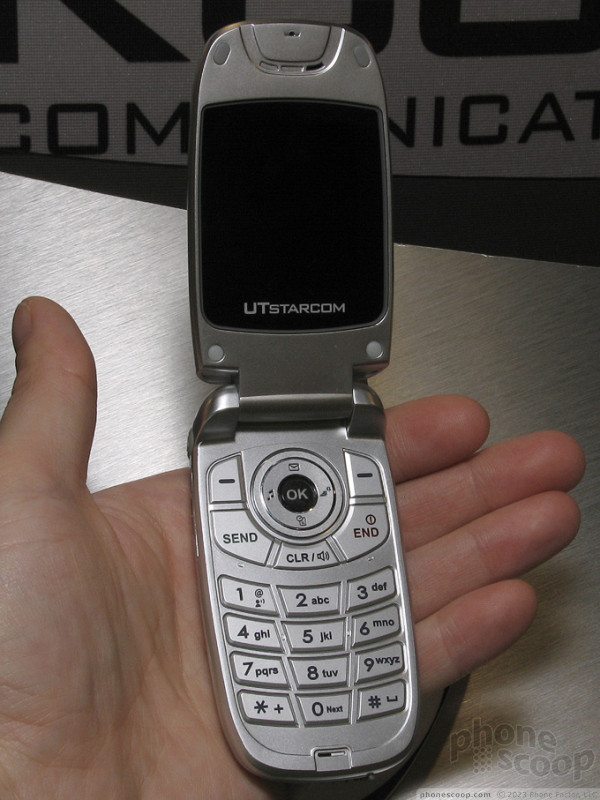




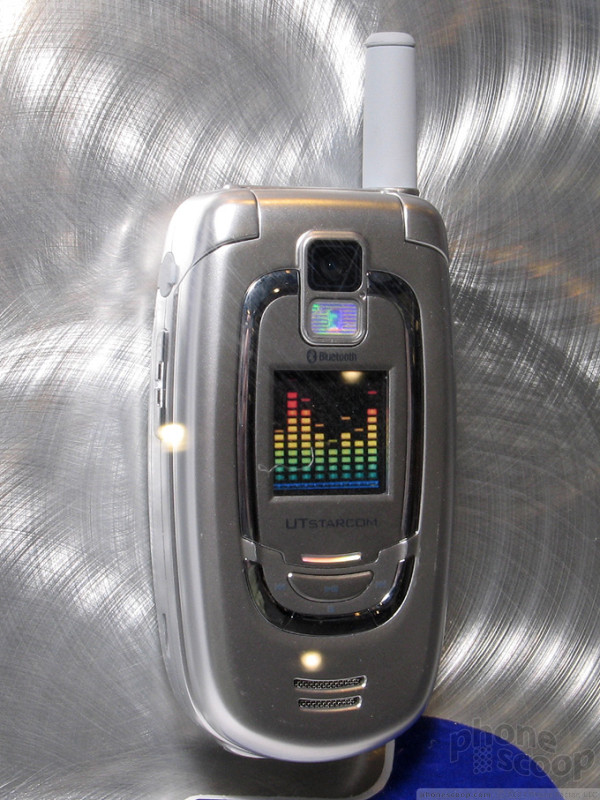


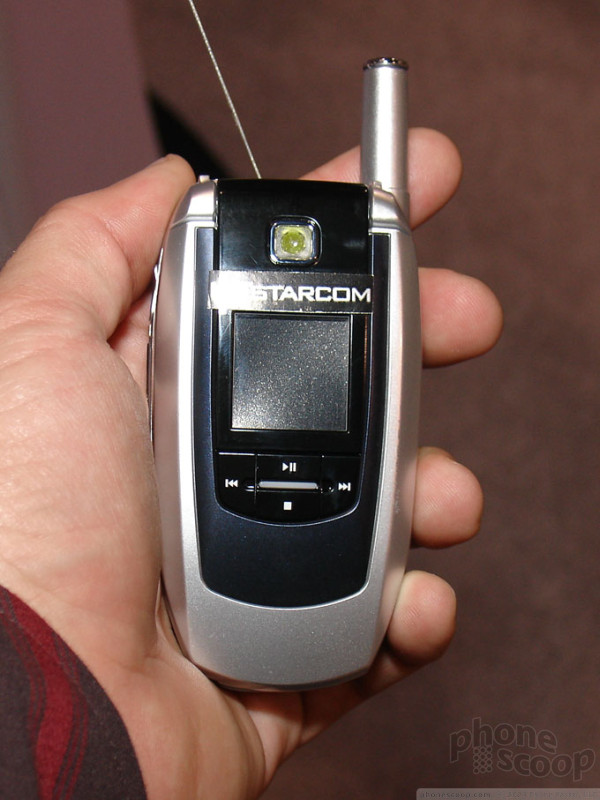



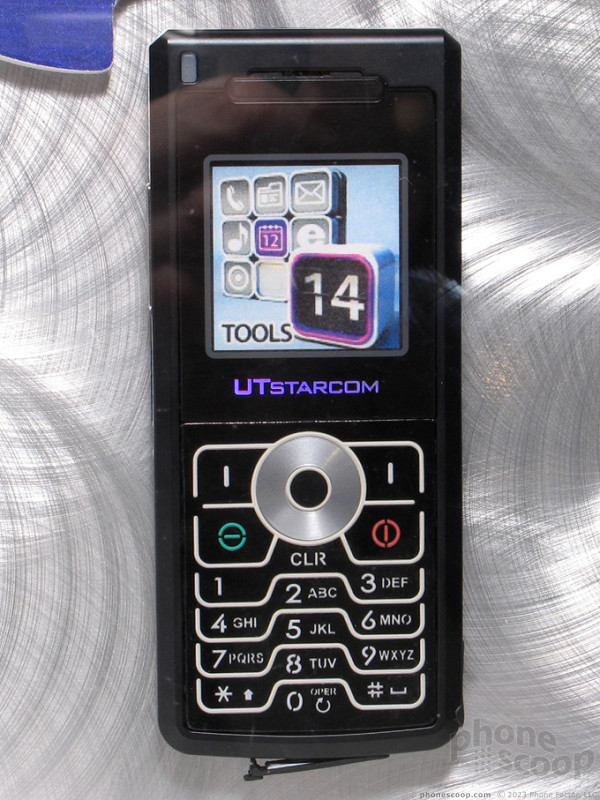






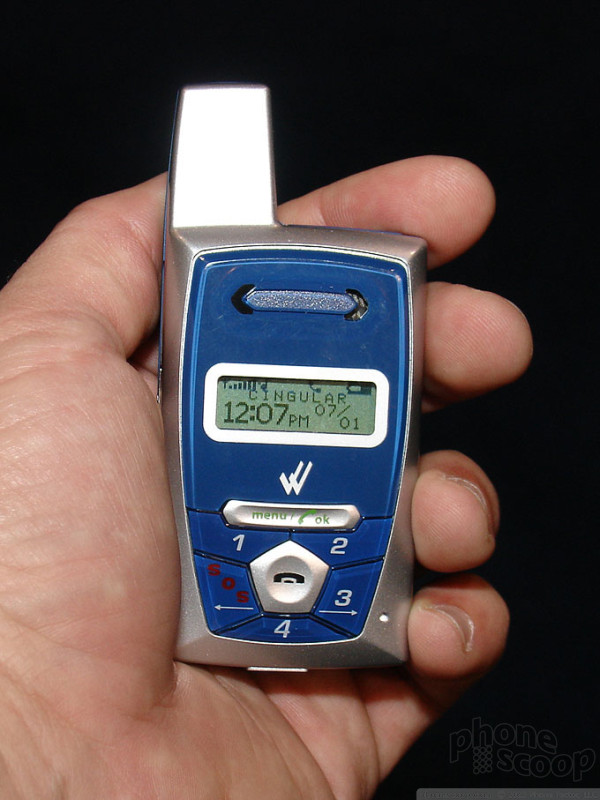


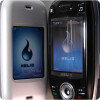 Helio Hero Video Tour
Helio Hero Video Tour
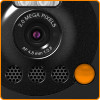 Review: Sony Ericsson W810
Review: Sony Ericsson W810
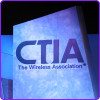 CTIA 2006
CTIA 2006
 3GSM 2006
3GSM 2006
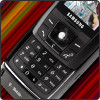 Review: Samsung T809
Review: Samsung T809
 UTStarcom CDM-8945 / PN-230
UTStarcom CDM-8945 / PN-230
 Pantech PN-210 / PN-205
Pantech PN-210 / PN-205
 LG CU320
LG CU320
